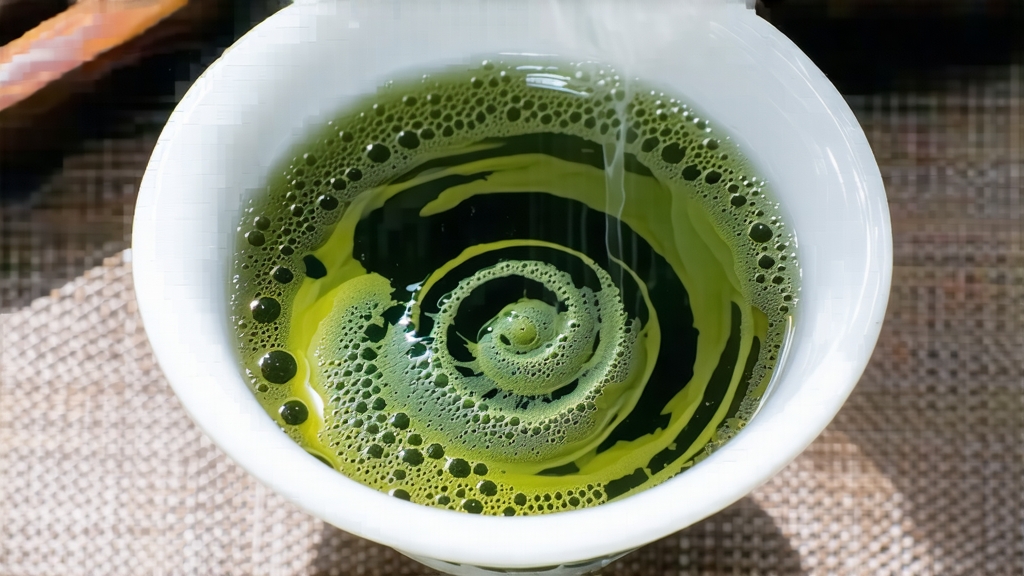
Biluochun, whose name translates literally to “Green Snail Spring,” is one of China’s ten most celebrated teas, yet it remains a delicate secret outside serious tea circles. Grown on the tiny islands and slopes that rise from Taihu Lake in Jiangsu Province, this green tea carries the perfume of apricot blossoms and the mineral memory of submerged limestone. Its story begins in the late Tang dynasty, when monks on Dongting Mountain noticed that tea bushes planted between fruit trees produced leaves of unusual fragrance. By the Ming era the tea had become a tribute item; legend claims the Kangxi Emperor, tasting it on a southern inspection tour, was so struck by the tight spiral shape and jade color that he renamed it Biluochun, replacing its humbler original name “Xia Sha Ren Xiang,” literally “Scary Fragrance,” said to describe the startling aroma that leapt from the cup.
The tea belongs to the “lake-grown” micro-category of Chinese greens. Unlike the mountain terraces of Longjing or the cloud-veiled cliffs of Huangshan Maofeng, Biluochun bushes sit barely 50–200 m above sea level, their roots tickled by the mist that rolls off Taihu at dawn. The lake acts as a gigantic reflector, returning early-morning sunlight to the underside of leaves and accelerating the synthesis of floral volatiles. Growers further intensify aromatics by interplanting the bushes with peach, plum, loquat and apricot trees; petals fall, bees shuttle, and the tea leaves absorb airborne esters that later emerge in the cup as notes of ripe nectarine and osmanthus.
Two cultivars dominate today: the traditional “Xiao Ye” (small-leaf) landrace that gives the finest, most tender spirals, and the hardier “Da Ye” (large-leaf) clone developed in the 1970s to extend the harvest window. Purists insist only Xiao Ye picked before the Qingming festival (early April) deserves the name Biluochun; later flushes are marketed as “Subian” or “Biluo grade two.” The picking standard is ruthless: one bud plus an unfolding leaf no longer than 2.5 cm, plucked at dawn while still beaded with dew. A skilled picker gathers barely 500 g of fresh leaf in a morning; 6.5 kg of this fluff will shrink to a single kilo of finished tea.
The craft that follows has changed little in three centuries. First, the leaves are spread in bamboo trays no thicker than 2 cm and withered for three hours in shaded draft; the goal is to reduce grassy notes without losing lake-born moisture. Next comes the kill-green step, still done by hand in the premium workshops. A wok is heated to 180 °C, brushed with a whisper of Dongting spring water, then charged with 250 g of leaf. The maker’s palms—calloused yet sensitive—flutter, press, roll and fling the leaves for precisely four minutes, lowering the temperature by 20 °C every sixty seconds. The gesture looks like a culinary stir-fry, but it is closer to pottery: the tea must be “fixed” yet not “killed,” its enzymes stilled while its cells remain intact enough to survive the coming spiral.
While still hot, the leaves are rolled into the signature snail shape. Traditionally this was done on a straw mat; today most artisans use a fine-mesh bamboo screen. Pressure starts light, almost flirtatious, then gradually tightens until each leaf coil resembles a tiny jade shell. The final firing, called ti xiang (“lifting the fragrance”), takes place at 60 °C for forty minutes. The master constantly lifts handfuls of tea to nose-level, judging readiness by aroma alone; when the scent shifts from fresh orchid to honeyed apricot, the firing stops. After cooling, the spirals are hand-sorted: any fragment longer than 1 cm or showing red edges is discarded. The finished tea resembles a dish of tiny emerald snails, their downy tips catching light like seafoam.
To brew Biluochun properly one must unlearn habits suited to sturdier greens. The leaves are so tender that water hotter than 80 °C will cook them, releasing bitter quinine notes. Begin by warming a tall glass—yes, glass, not porcelain—so the foreign eye can watch the show. Use 3 g of tea for 200 ml of water, pouring along the glass wall to avoid scorching. Within seconds the spirals unfurl, sinking in slow motion while releasing a pale chartreuse liquor. The